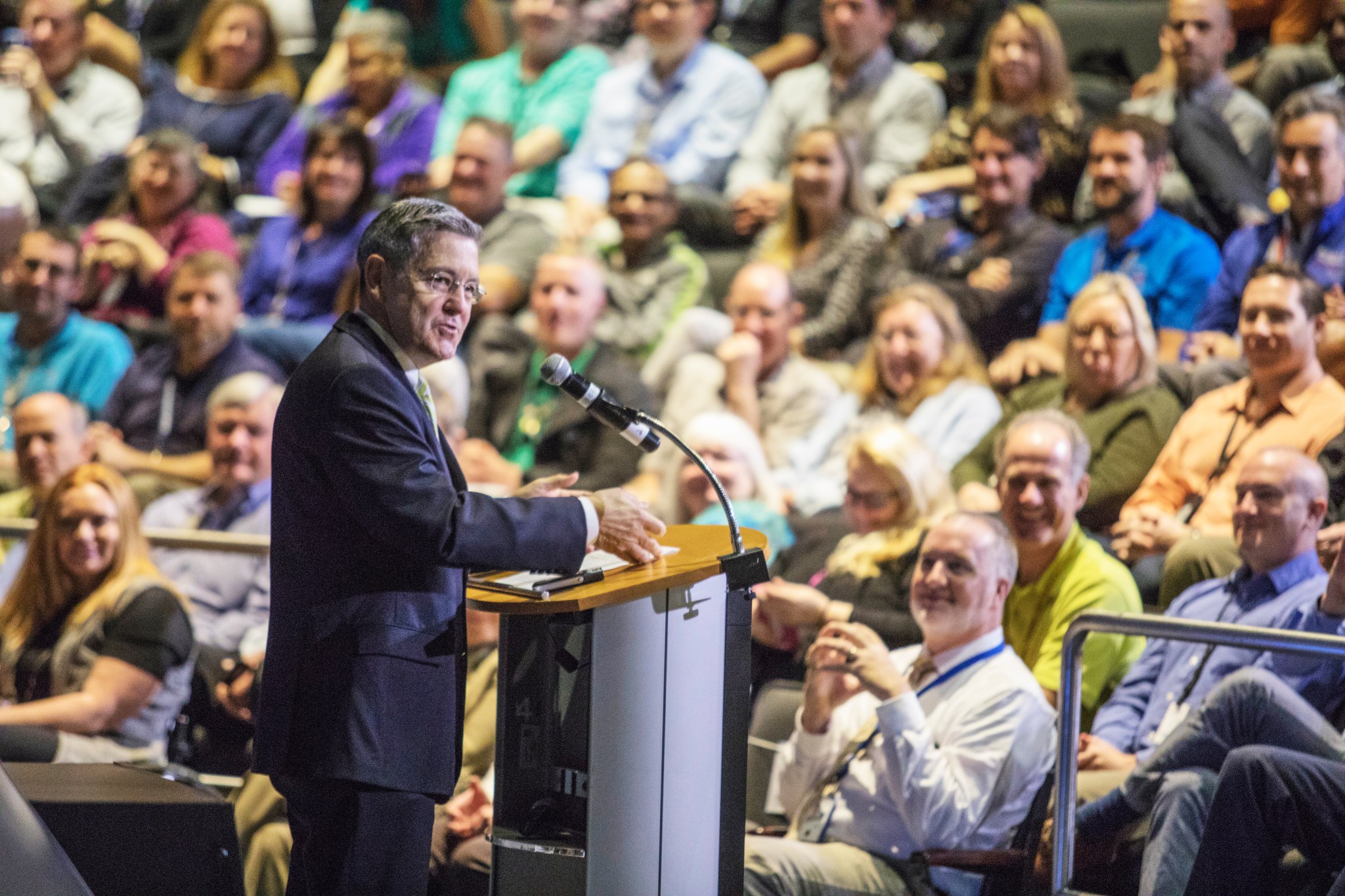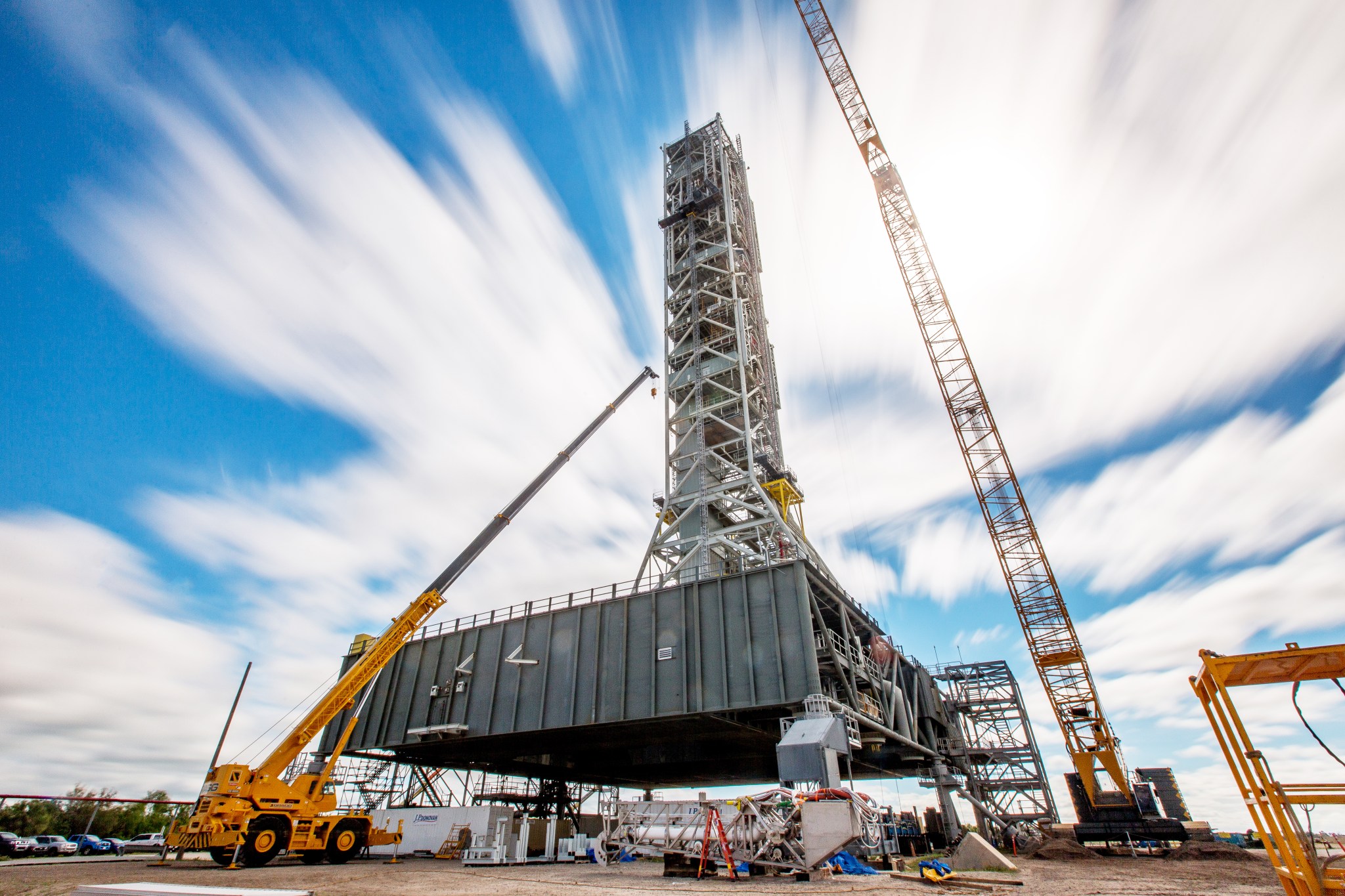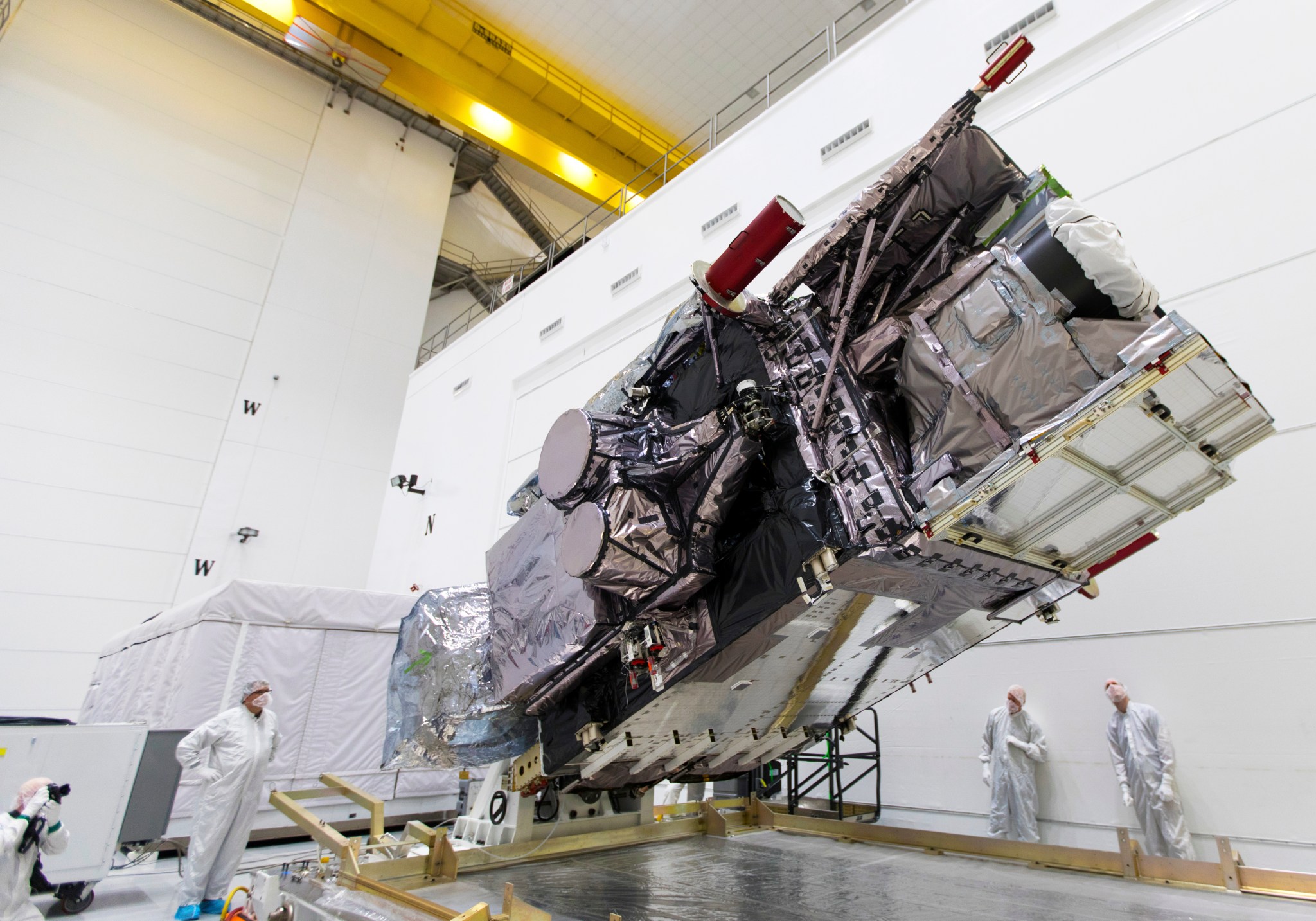By Bob Granath
NASA’s Kennedy Space Center, Florida
Kennedy Space Center Director Bob Cabana recently spoke to spaceport employees about plans for 2018. The coming year will be highlighted by NASA’s Commercial Crew Program (CCP) partners preparing to launch test flights for crewed missions to the International Space Station.
“This is going to be an awesome year for us,” Cabana said speaking to center employees on Jan. 11, in the Lunar Theater of the Kennedy Space Center Visitor Complex’s Apollo Saturn V Center. “The number one priority this year is we’ve got to get commercial crew flying to the International Space Station.”
Through the CCP, based primarily at Kennedy, partners SpaceX and Boeing are developing safe, reliable and cost-effective access to and from low-Earth orbit with American-built spacecraft systems. Boeing’s CST-100 Starliner and SpaceX’s Crew Dragon are the next generation of American spacecraft to carry astronauts to the space station.
Lisa Colloredo, deputy program manager for the Commercial Crew Program, noted that two uncrewed demonstration flight tests, known as Demonstration Mission 1 for SpaceX and Orbital Flight Test for Boeing are scheduled for later this year. After the uncrewed flight tests, to the station, both companies will launch a mission with astronauts aboard prior to being certified by NASA for crew rotation missions.
“This is going to be a big year for the Commercial Crew Program,” Colloredo said.
According to Josie Burnett, director of Exploration Research and Technology Programs, crews aboard the space station also will continue to receive supplies launched by SpaceX commercial resupply services missions lifting off from the Florida spaceport.
“The space station continues to be a high priority for our organization,” she said. “We are flying numerous commercial cargo flights to the station this year.”
While partnering with industry to support transportation to the space station and meet other needs, NASA continues to focus on development of its Orion spacecraft and Space Launch System (SLS) rocket that one day will send astronauts beyond low-Earth orbit.
Darrell Foster, chief of Project Management in Exploration Ground Systems, explained that his organization will spend 2018 completing construction of facilities to support SLS and Orion and be ready to accept flight hardware.
The SLS is a new heavy-lift rocket that will be capable of sending humans aboard Orion to destinations such as the Moon and Mars. The first integrated flight of the SLS and Orion is known as Exploration Mission-1, and will demonstrate the nation’s commitment and capability to extend human presence to the Moon and beyond.
“We are now working full bore toward the Exploration Mission-1 launch in December of 2019,” Foster said.
The coming year also will be a busy time for the Launch Services Program (LSP) at Kennedy. Mic Woltman, chief of the Fleet Systems Integration Branch of LSP, spoke about his organization’s plans.
“This will be an exciting year for us,” he said. “We have six launches, with six launch vehicle configurations at six launch sites this year.”
Those missions are:
- NOAA’s Geostationary Operational Environmental Satellite-S, or GOES-S
- NASA’s Transiting Exoplanet Survey Satellite, or TESS
- NASA’s Interior Exploration using Seismic Investigations, Geodesy and Heat Transport, or InSight
- NASA’s Parker Solar Probe
- NASA’s Ice, Cloud and land Elevation Satellite-2, or ICESat-2
- NASA’s Ionospheric Connection Explorer, or ICON
“I’m really excited about our future,” Cabana said. “If we take care of our employees, our organizations, focus on our customers and bring innovation into the forefront through our leadership efforts, there is no doubt we will be successful.”





























